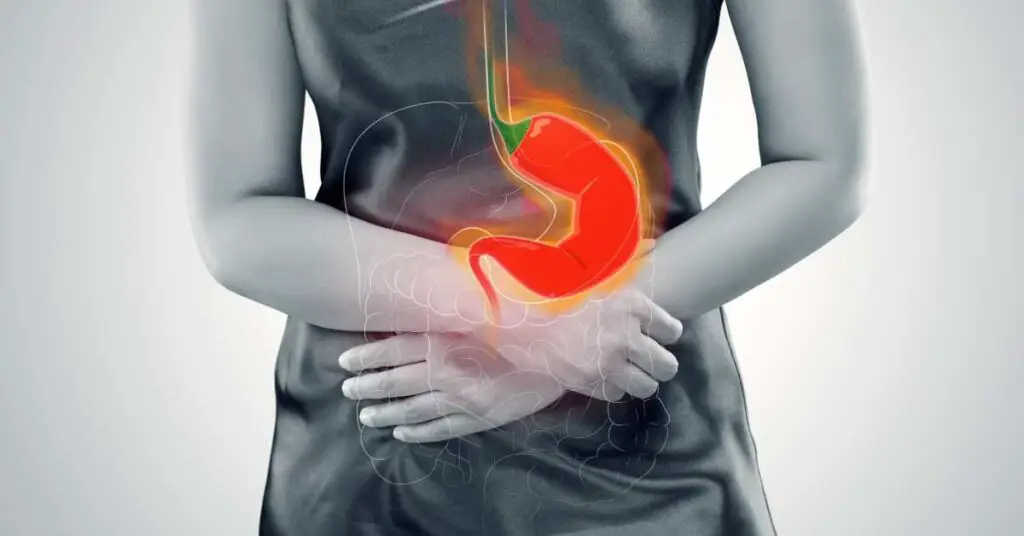Panic attacks can be extremely debilitating, leading to fear and anxiety that affect a person’s daily life. But what if there was an effective way of fighting panic attacks without the use of medication? Enter meditation – a centuries-old practice used for relaxation and stress relief. Through the use of mindful breathing techniques, body scans, and guided imagery, many people have found that they are able to reduce their symptoms associated with panic attacks.
In this article we will explore how meditation may help in managing or even curing panic attacks. We will discuss the benefits of using meditation as well as some tips on how best to practice it so you can start feeling better soon!
Yes, meditation can help in curing panic attacks as it can help reduce symptoms associated with them. Meditation improves concentration and mindfulness, which helps to focus on the present moment instead of worrying about the future or ruminating on past events.
Through regular practice of meditation techniques such as mindful breathing and guided imagery, one can retrain their brain to respond differently and replace fear-inducing thoughts with calming ones. Additionally, meditating regularly could help build emotional resilience over time which may prevent panic attacks from occurring altogether.

What are panic attacks, their symptoms, and their causes?
Panic attacks are episodes of intense fear or anxiety that can come on suddenly and often without warning. They can be very frightening and can cause physical symptoms such as a racing heart, chest pain, shortness of breath, sweating, trembling or shaking, feeling faint or dizzy, nausea or abdominal pain. These feelings of terror can last for several minutes and are often accompanied by an irrational fear that something very bad is going to happen.
The exact cause of panic attacks is not entirely known but they may be triggered by certain events or situations such as crowded places, job interviews or exams. Other causes may include genetics, mental health conditions like post-traumatic stress disorder (PTSD), substance abuse, chronic stress or anxiety disorders. In some cases, panic attacks have been linked to changes in the brain chemistry due to medications or physical illness.
Panic attacks can be terrifying and distressing for those suffering from them. But there are ways to manage panic attacks using different treatments such as cognitive behavioral therapy (CBT), mindfulness practices or even medications like antidepressants and anti-anxiety drugs.
However, one of the most popular treatments for managing panic attacks is meditation. Meditation has been used for centuries to help people reduce stress and relax their mind and body. It has been found to be particularly helpful in calming the nervous system which helps with reducing the symptoms associated with panic attacks.
Meditation works by helping people become more aware of their thoughts and feelings in order to gain control over them rather than letting them take control over you. When we become aware of our thoughts and feelings we can better recognize when we’re feeling anxious about something so that we can respond differently instead of reacting in a way that might worsen the situation – like having a panic attack!
Practicing meditation regularly also helps increase emotional resilience which helps reduce the risk of having future panic attacks as well as teaching us coping skills to deal with our fears more effectively when they do arise.
How can meditation cure panic attacks?
Meditation is a powerful tool that can be used to manage and even cure panic attacks. It has been found to be particularly effective in calming the nervous system and reducing symptoms associated with panic attacks such as rapid heartbeat, chest pain, shortness of breath, trembling or shaking, feeling faint or dizzy, nausea or abdominal pain.
Meditation helps reduce stress and anxiety by teaching one to become aware of their thoughts and feelings so that they can better recognize when they are feeling anxious about something. Through regular practice of different meditation techniques such as mindful breathing and guided imagery, one can retrain their brain to respond differently in fear-inducing situations and replace fear-inducing thoughts with calming ones. This helps reduce the intensity of symptoms associated with panic attacks as well as build emotional resilience over time which may prevent them from occurring altogether.
In addition to helping manage symptoms associated with panic attacks, meditation has also been found to improve overall mental health. Research has shown that regular meditation is linked to greater happiness and improved psychological wellbeing. It can also help increase self-awareness which helps people better understand themselves and their triggers for anxiety or fear so that they can find healthier ways to cope with these emotions instead of resorting to panic attacks.
Finally, meditation has been known to help improve concentration which helps one better focus on their immediate tasks instead of worrying about the future or ruminating on past events – both common causes for triggering a panic attack.
Overall, regular practice of meditation not only provides immediate relief during a panic attack but also helps prevent them from occurring in the future by building emotional resilience over time and increasing self-awareness so that one can better cope with fear-inducing situations without resorting to panic attack behaviors. For those who suffer from frequent panic attacks, incorporating meditation into your daily routine could be a great way to take back control over your life!
What are the benefits of incorporating meditation into your daily routine to avoid panic attacks?
Benefits of incorporating meditation into your daily routine to avoid panic attacks:
– Helps calm the nervous system and reduce symptoms associated with panic attacks.
– Teaches one to become aware of their thoughts and feelings so that they can better recognize when they are feeling anxious about something.
– Retrains the brain to respond differently in fear-inducing situations and replace fear-inducing thoughts with calming ones.
– Builds emotional resilience over time which may prevent future panic attacks from occurring.
– Improves overall mental health, increases happiness, boosts psychological wellbeing, and increases self awareness.
– Improves concentration which helps one better focus on immediate tasks instead of worrying about the future or ruminating on past events – both common causes for triggering a panic attack.
Are there any specific meditation methods for calming down people who are suffering from panic attacks?
Yes, there are specific meditation methods specifically designed to help those suffering from panic attacks. These methods typically focus on breathing techniques, relaxation exercises, and learning to be mindful of the present moment.
Breathing exercises such as diaphragmatic (or belly) breathing can be particularly effective for calming the body and mind during a panic attack, which is why it is often used in cognitive-behavioral therapy. This technique involves focusing on deep breaths while consciously expanding the belly with each inhalation and contracting it with each exhalation. This technique helps to reduce overall tension in the body, slow down heart rate and breathing rate, and bring awareness back to the present moment.
Other relaxation techniques that can help reduce symptoms of panic include progressive muscle relaxation, guided imagery, and mindfulness meditation. Progressive muscle relaxation involves tensing each group of muscles for a few seconds before releasing them completely; this helps teach individuals how to recognize when their muscles are tense so that they can consciously relax them when needed. Guided imagery is another powerful technique for calming one’s physical and mental state; this entails picturing oneself in a peaceful setting such as on a beach or floating in a pool surrounded by soothing sounds or smells.
Lastly, mindfulness meditation is based upon observing one’s thoughts without judgement and bringing awareness back to the present moment when necessary; this can reduce rumination about past events or worrying about the future which are both common triggers for panic attacks.
Overall, these specific meditation methods all work together to help calm one’s mind and body during a panic attack so that they don’t spiral out of control and become overwhelming.
Additionally, regularly practicing any of these techniques can help increase emotional resilience over time so that individuals can better cope with fear-inducing situations without resorting to panic attack behaviors.
What are the challenges they face during meditation treatments?
One of the main challenges faced by people suffering from panic attacks during meditation treatments is the fear of losing control. Panic attacks are often triggered by fear and a feeling of loss of control, so when someone begins to meditate, they may become overwhelmed by these feelings. This can lead to feelings of guilt, shame, and embarrassment which can prevent them from continuing their practice.
Additionally, many people who suffer from panic attacks may have difficulty quieting the mind and focusing on their breath because they are too preoccupied with worrying thoughts.
Another challenge that those suffering from panic attacks face during meditation treatments is having difficulty staying in the present moment. When experiencing symptoms of a panic attack such as increased heart rate and breathing rate, it is easy for one to drift away into rumination about past events or worrying about the future – both common triggers for panicking. Meditation helps counteract these tendencies by retraining the brain to respond differently in fear-inducing situations and replacing fearful thoughts with calming ones; however, this can be difficult for those who suffer from anxiety since ruminating on past or future events has become so habitual for them.
Lastly, another challenge faced by those with panic attacks during meditation treatments is dealing with physical sensations associated with fear or anxiousness such as chest tightness or elevated heart rate. Many times these physiological responses can feel so overwhelming that individuals will avoid them altogether rather than facing them head-on and learning how to manage or cope with them through relaxation techniques such as deep breathing.
Overall, while meditation treatments are very helpful in managing symptoms associated with panic attacks, it’s important to recognize that there are many challenges that come along with incorporating this practice into one’s daily routine. For example, learning how to stay focused on one’s breath while dealing with overwhelming physical sensations and battling intrusive thoughts can be quite difficult – but also necessary! With patience and dedication though, anyone can learn how to better manage their anxiety through meditation treatments so that they can take back control over their lives once again.
Tips on How to Practice Meditation for Panic Attacks
1. Start slowly: When beginning to practice meditation for panic attacks, it is important to start slow and gradually increase the length of each session. This will help ensure that the individual is not overwhelmed by any sensations or emotions that may arise during the process. Additionally, having a daily routine such as meditating every morning can help establish a regular practice and make it easier to stay consistent.
2. Focus on breath: One of the most important aspects of meditation for panic attacks is focusing on one’s breath, which helps calm both the mind and body. During a panic attack, individuals tend to take short rapid breaths which causes their heart rate to increase; instead, deep belly breaths should be practiced in order to slow down and regulate one’s breathing. Inhaling deeply through the nose and exhaling slowly out through the mouth can help bring awareness back to what is happening in the present moment and reduce anxiety-inducing thoughts about past or future events.
3. Visualize positive scenarios: Another helpful tip when practicing meditation for panic attacks is using visualization techniques to imagine positive scenarios. By picturing yourself in a safe place surrounded by calming visuals or sounds, your brain will start to associate these images with feelings of safety and relief – which can then be used as an anchor when dealing with fear-inducing situations in real life.
4. Practice mindfulness: Mindfulness meditation involves bringing awareness back to the present moment without judgement when necessary; this helps reduce rumination about past events or worrying about the future which are both common triggers for panic attacks. Furthermore, it allows individuals to observe their fear-based thoughts without attaching any labels or judgement which makes them easier to manage over time since they are no longer seen as “bad” or wrong” but simply part of being human.
5. Seek out support: Lastly, it is important for those suffering from panic attacks to seek out emotional support when needed as this can greatly aid in managing symptoms associated with anxiety or fear-inducing situations. Having someone who understands what you are going through and who can provide guidance towards healing can be incredibly helpful in learning how to properly cope with challenging emotions – whether that be through talk therapy, medication, yoga classes, or other relaxation techniques such as meditation!
Conclusion
In conclusion, meditation can be an effective treatment for those suffering from panic attacks. By taking the time to focus on one’s breath and visualize positive scenarios, individuals can better manage their fear-based thoughts and reduce anxiety levels overall.
Additionally, it is important to seek out emotional support when necessary as this can help in dealing with challenging emotions more effectively. With patience and dedication though, anyone can learn how to use these techniques so that they may take back control of their lives once again!











